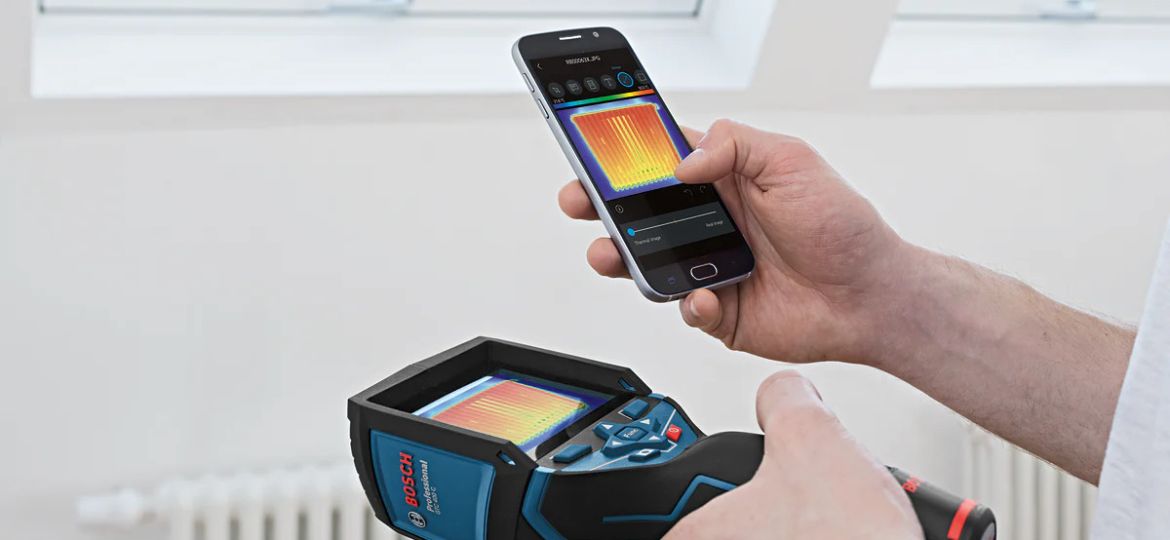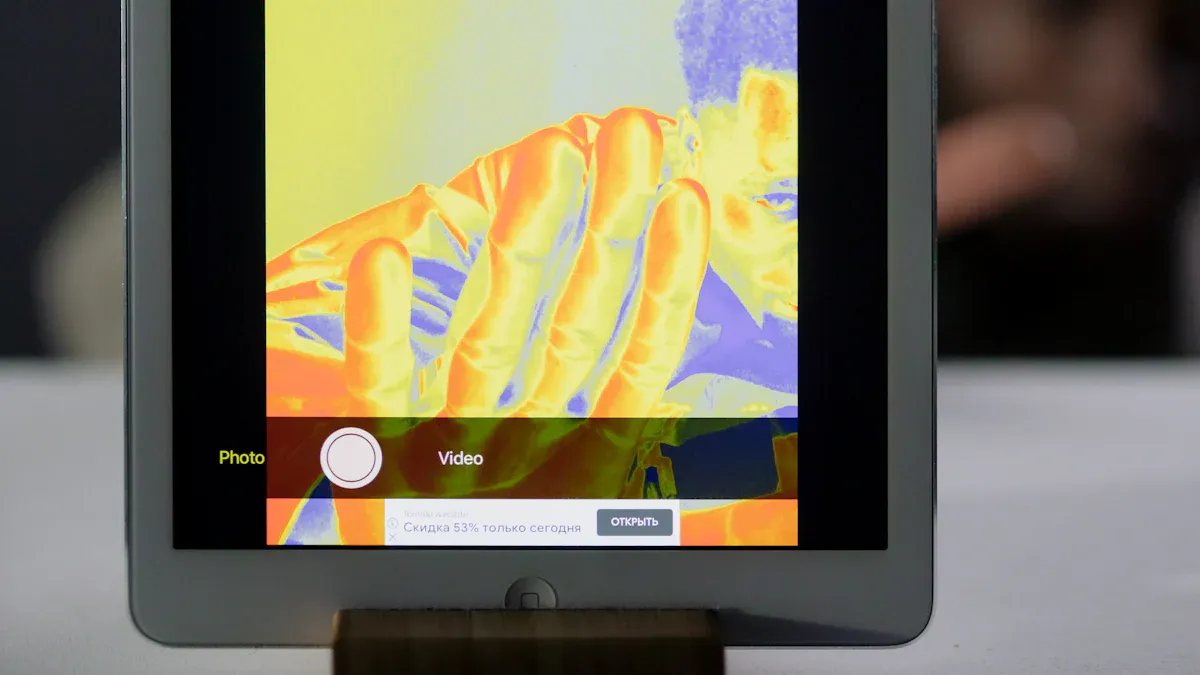

You can pick the best thermal tool by thinking about your job. Make sure the tool has features that fit your work. This helps you get good results. Look at what you need for your task. Think about important features, how well it works, if you can trust it, and if it is worth the price. Doing this helps you choose wisely and get great results.
Define Needs
Application Type
You need to start by thinking about what you want to do with your thermal tool. Every job has different needs. Some people use these tools for building inspections. Others use them for electrical work, HVAC, or even research. If you work in construction, you might check for heat loss in walls. If you work with electronics, you may look for overheating parts.
Tip: Write down your main tasks before you shop for a tool. This helps you focus on what matters most.
You should also consider the environment. Will you use the tool indoors or outdoors? Some tools work better in bright sunlight. Others are best for dark or tight spaces. Knowing your work setting helps you pick the right features.
Performance Requirements
After you know your application, you need to think about how well the tool must perform. Ask yourself these questions:
- How accurate do you need the temperature readings to be?
- Do you need to see small temperature changes?
- Will you measure very hot or very cold objects?
Some jobs need high accuracy. For example, if you work with sensitive electronics, you need a tool that shows tiny changes in heat. If you use hot air gun equipment or work with Hot Air Technology, you may need a tool that can handle high temperatures.
A heat gun user might need a wide temperature range. Someone checking home insulation may need a tool with good sensitivity to spot small leaks. Always match the tool’s performance to your job. This saves you time and helps you get the best results.
Thermal Tool Features

Resolution
Resolution tells you how clear the thermal image will look. If you need to spot small details, pick a thermal tool with high resolution. You can see tiny cracks in walls or small hot spots on a circuit board. High resolution helps you find problems faster. If you use Hot Air Technology for repairs, you need to see exactly where heat goes. A blurry image can hide important details.
Tip: Always check the resolution before you buy. Higher numbers mean sharper images.
Sensitivity
Sensitivity shows how well your thermal tool can detect small changes in temperature. If you work with a heat gun or hot air gun, you want to see even the smallest temperature shifts. Good sensitivity helps you find leaks, weak spots, or overheating parts. If your tool has low sensitivity, you might miss important clues.
You should look for a sensitivity rating called NETD (Noise Equivalent Temperature Difference). Lower NETD means better sensitivity. This is very important for jobs like electrical inspections or HVAC work.
Temperature Range
Temperature range tells you the highest and lowest temperatures your thermal tool can measure. If you use Hot Air Technology, you need a tool that can handle high heat. Some jobs need a wide range, like checking ovens or engines. Other jobs, like home inspections, need a tool that works well at lower temperatures.
Note: Always match the temperature range to your job. If you use a heat gun, make sure your tool can measure the heat it produces.
Emissivity Selection
Emissivity is a setting that helps your thermal tool measure temperature more accurately. Different materials give off heat in different ways. Metal, wood, and plastic all have different emissivity. If your tool lets you change the emissivity, you can get better readings.
If you work with many materials, pick a thermal tool with adjustable emissivity. This helps you get true results, especially when you use a hot air gun on different surfaces.
Field of View
Field of view tells you how much area your thermal tool can see at once. A wide field of view helps you scan large spaces quickly. If you inspect big rooms or large machines, you need a wide field. If you work on small parts, a narrow field of view is better.
You should choose the field of view based on your main tasks. If you use Hot Air Technology for large repairs, a wide field saves time.
Image Storage
Image storage lets you save pictures from your thermal tool. If you need to show proof of your work, image storage is very important. You can keep records, share results, or compare changes over time. Some tools store images on a memory card. Others let you send pictures to a computer or phone.
Tip: Pick a thermal tool with easy image storage. This helps you stay organized and makes your reports better.
Match Specifications
Compare to Needs
You need to make sure the thermal tool fits your job. First, look at the features you wrote down before. Check if the tool has the right resolution, sensitivity, and temperature range. If you use Hot Air Technology, the tool must handle high heat and spot small changes. If you work with many materials, pick a tool with adjustable emissivity.
Make a checklist of the features you really need. Use this list when you look at different tools. If you use a heat gun or hot air gun, you need a tool that measures heat fast and well. Some tools have special modes for quick scans or close checks. These features help you work faster and find problems sooner.
Tip: Always check if the tool’s features match your real jobs. This helps you not buy things you do not need.
Camera Types
There are different camera types for thermal tools. Each type is best for certain jobs. Handheld cameras are easy to carry and use for quick checks. You can use them for building checks or HVAC work. Fixed cameras stay in one spot and watch equipment for a long time. These are good for research or big factories.
Smartphone attachments let your phone work as a thermal camera. These are good for simple jobs or if you need to move around. Some cameras can connect to computers for more detailed work. If you use Hot Air Technology, pick a camera that can handle high heat and show clear pictures.
- Handheld cameras: Good for fieldwork and quick checks.
- Fixed cameras: Best for long-term watching.
- Smartphone attachments: Useful for light jobs and easy to carry.
Note: Pick the camera type that matches how you work. The right camera saves you time and helps you do better work.
Extra Features
Advanced Modes
You can boost your work with advanced modes on your device. Many tools offer features like spot measurement, area analysis, and automatic alarms. Spot measurement lets you check the temperature at a single point. Area analysis helps you see the average temperature over a section. Automatic alarms warn you when the temperature goes above or below a set limit.
If you use Hot Air Technology, advanced modes help you control heat more precisely. You can set alarms to alert you if your heat gun or hot air gun gets too hot. Some devices offer image blending, which mixes thermal and visual images. This makes it easier to find problems in your workspace. You can also use video recording to track changes over time.
Tip: Try different modes to see which ones help you work faster and safer.
Accessories
Accessories make your job easier and help you get better results. You can use special lenses to zoom in on small parts or see wide areas. Tripods keep your device steady for long inspections. Carrying cases protect your equipment when you travel.
If you work with a heat gun or hot air gun, you may need protective covers or shields. These keep your device safe from high temperatures. Some accessories help you connect your device to a computer or phone. This lets you share images and reports with your team.
- Extra batteries give you more time in the field.
- Screen protectors keep your display clear.
- Mounts help you use your device hands-free.
Note: Choose accessories that match your main tasks. The right add-ons save you time and help you work more efficiently.
Value and Support
Budget
You need to set a clear budget before you choose any device. Think about how much you can spend and what features matter most for your work. Sometimes, a lower-priced model covers basic needs. If you use Hot Air Technology for complex jobs, you may need to invest more. Higher-priced devices often offer better accuracy and more advanced modes. You should compare prices from different brands and check what each package includes. Some devices come with extra accessories or software. Always look for the best value, not just the lowest price.
Tip: Make a list of must-have features. Spend your money on what helps you work better, not on extras you will never use.
Brand Reputation
Brand reputation matters when you buy a device for professional use. Trusted brands often provide better quality and more reliable results. You should read reviews from other users who work with heat gun or hot air gun equipment. Look for brands that have a history of making durable products. Reliable brands usually offer better customer service and support. You can ask your colleagues or search online for feedback about different brands.
Note: A well-known brand may cost more, but it can save you time and trouble in the long run.
After-Sales Support
After-sales support helps you get the most from your device. Good support includes warranty, training, and technical help. You should check if the brand offers a clear warranty policy. A longer warranty gives you peace of mind. Some companies offer free training or online guides. Training helps you use Hot Air Technology and related tools safely and effectively. You should ask about repair services and how easy it is to get help if something goes wrong.
- Look for brands with easy-to-reach support teams.
- Check if they offer quick repairs or replacements.
- Ask if they provide training for new users.
Tip: Strong after-sales support makes your investment safer and helps you learn new skills.
Selection Checklist


Step-by-Step Guide
You can follow these steps to choose the best thermal tool for your work with Hot Air Technology, a heat gun, or a hot air gun:
- List Your Main Tasks
Write down what you do most often. Think about how you use Hot Air Technology or a heat gun in your daily work. - Set Your Performance Goals
Decide how accurate your readings need to be. Check if you need to spot small temperature changes or measure high heat. - Pick Essential Features
Look for high resolution, good sensitivity, and a wide temperature range. Make sure your tool has adjustable emissivity if you work with different materials. - Choose the Right Camera Type
Select handheld, fixed, or smartphone attachments based on your job. Handheld cameras work well for quick checks. Fixed cameras help with long-term monitoring. - Check for Advanced Modes and Accessories
Find tools with spot measurement, alarms, and image blending. Accessories like tripods or extra batteries make your job easier. - Set Your Budget
Decide how much you want to spend. Focus on features that help you work better with Hot Air Technology or a heat gun. - Review Brand Reputation and Support
Choose trusted brands. Look for good warranty, training, and easy-to-reach support.
Tip: Use this guide every time you shop for a new thermal tool. It helps you avoid mistakes and saves you money.
Quick Reference
- Write down your main tasks.
- Decide on accuracy and temperature needs.
- Choose features like resolution and sensitivity.
- Pick the camera type that fits your work.
- Look for advanced modes and useful accessories.
- Set a clear budget.
- Check brand reviews and support options.
Remember: The right thermal tool helps you get better results with Hot Air Technology, a heat gun, or a hot air gun. Always match the tool to your job for the best outcome.
Choosing the right thermal tool starts with knowing your job needs. You look at features like resolution, sensitivity, and temperature range. You match these to your work with Hot Air Technology, a heat gun, or a hot air gun. Use the checklist to guide your choice.
Need help picking the best tool? Reach out for expert advice or a free consultation today!

